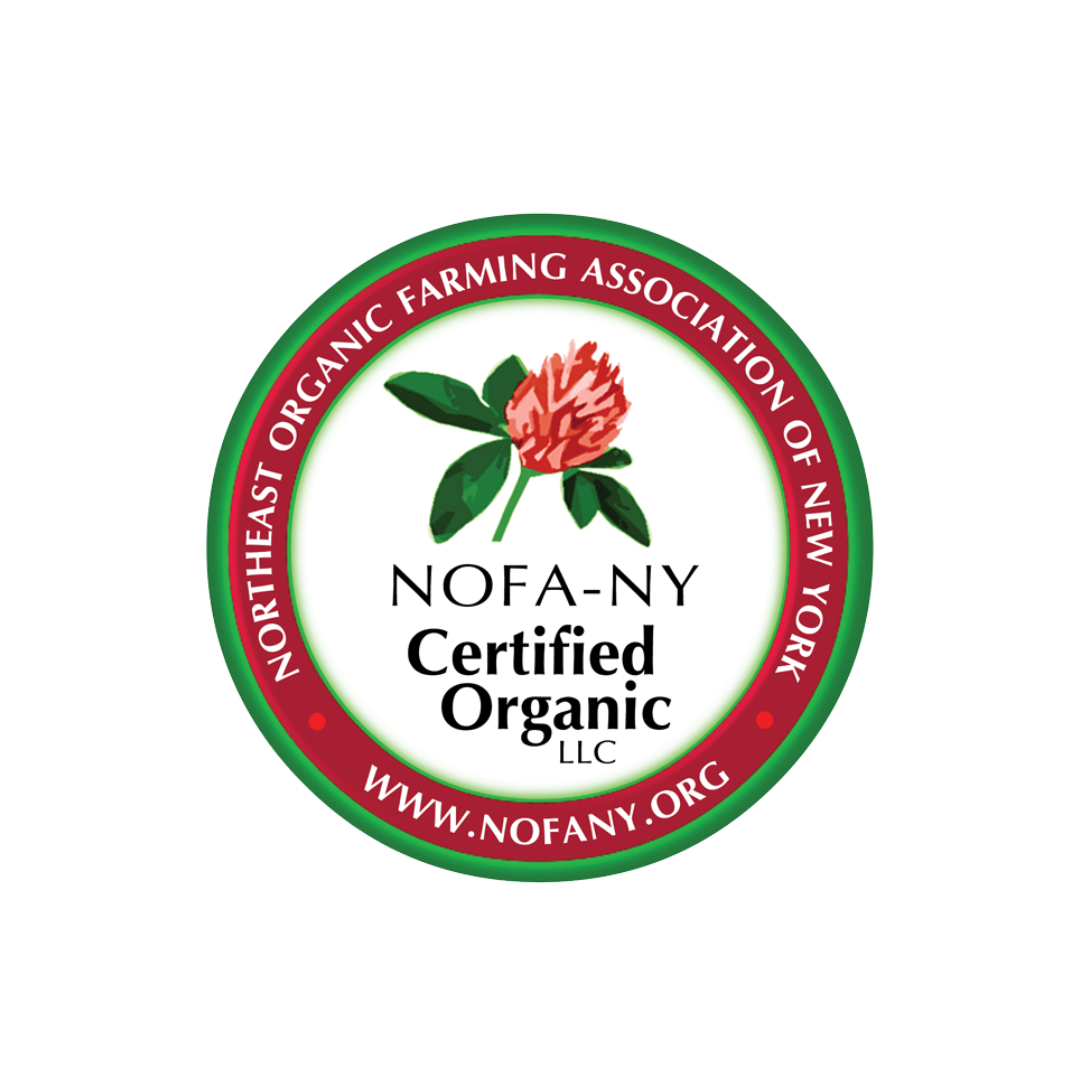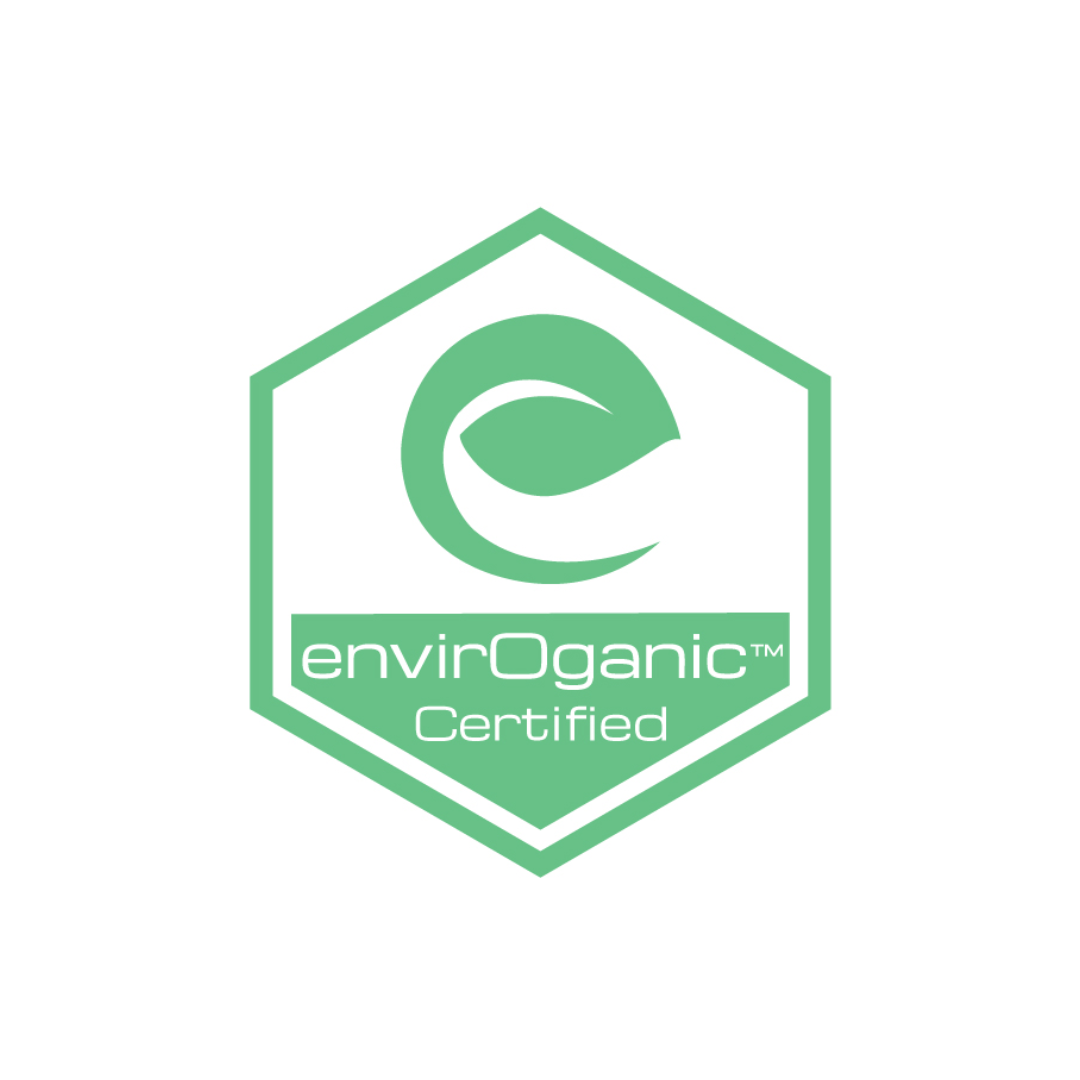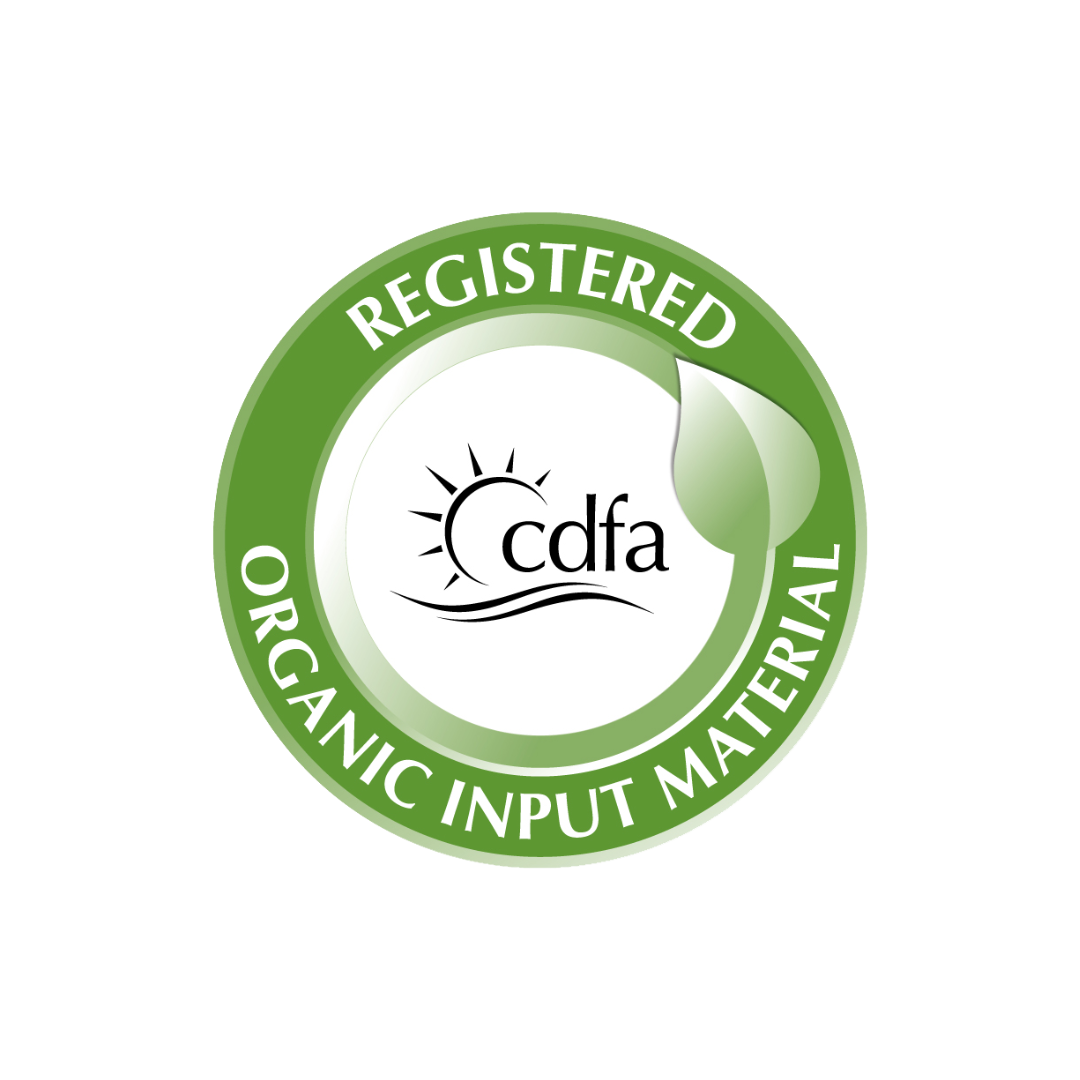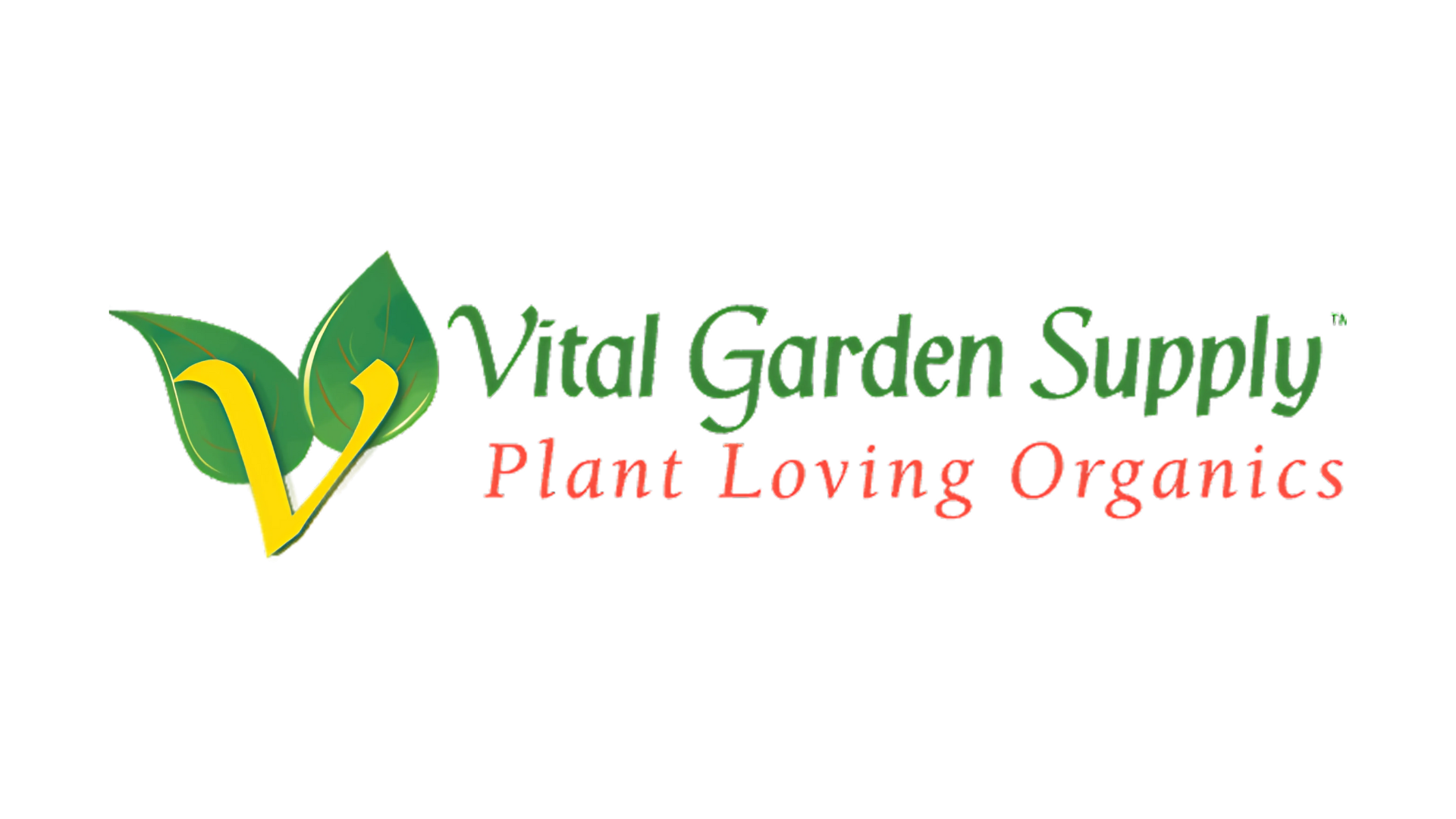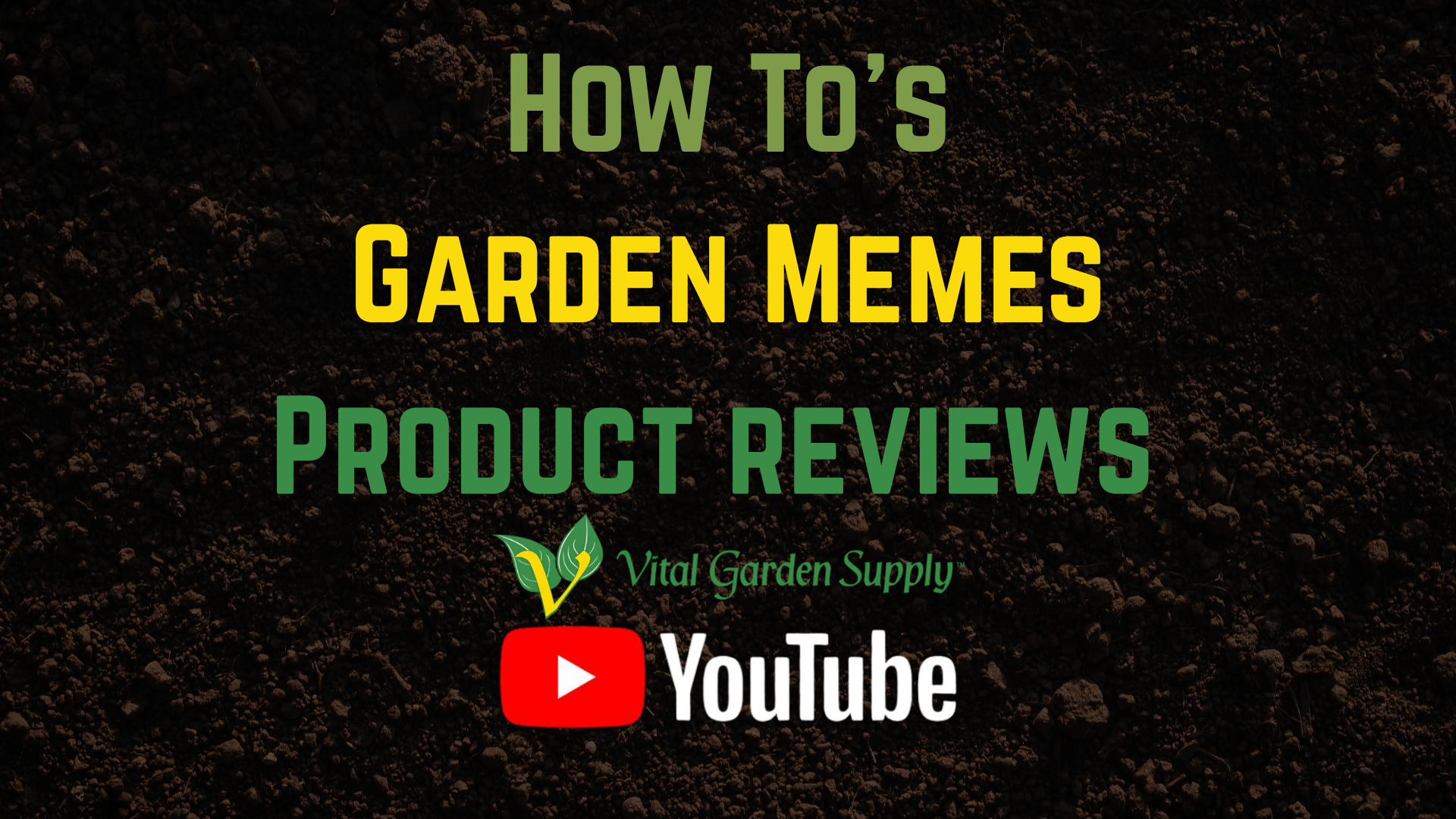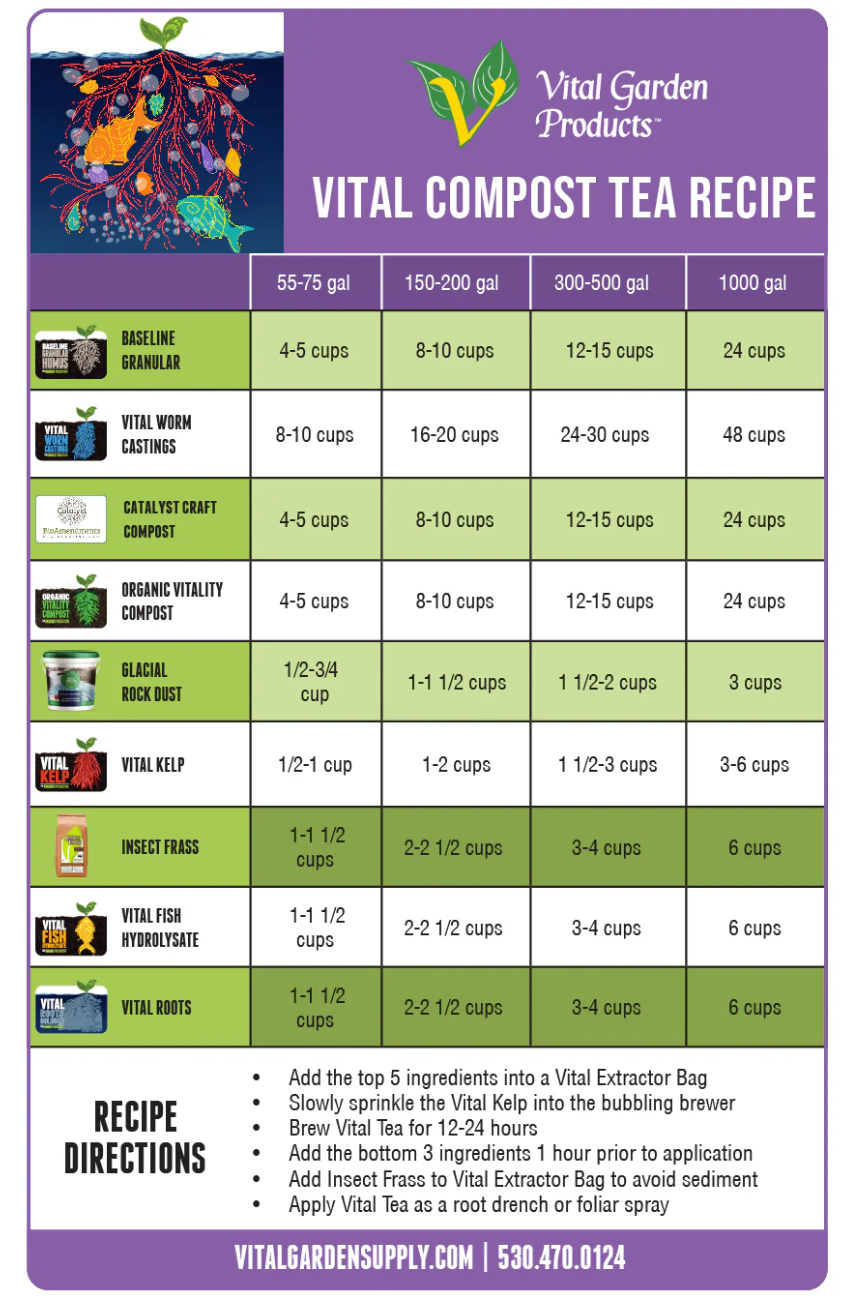
View Our Best Sellers

What Our Customers Are Saying
Learn More In The Information Portal
Calcium and magnesium are essential minerals that play a vital role in plant health and overall soil fertility. While these minerals may be present in your water or garden beds, they aren't always readily available for your plants to absorb. That's where Vital Cal Mag comes in, offering a unique solution to enhance soil microbiology and boost plant growth.
Vital Cal Mag is a vegetable-based hydrolyzate that effectively nourishes the soil's microbial community, which is crucial for the success of any organic gardening endeavor. Soil microbes are the unsung heroes of the garden, and Vital Cal Mag is specifically designed to support their activity, leading to healthier, more vibrant plants.
A key advantage of Vital Cal Mag lies in its formulation. Unlike other calcium sources that may use calcium chloride (which can harm beneficial soil microbes), Vital Cal Mag utilizes calcium carbonate. This thoughtful choice ensures that your plants receive the calcium and magnesium they need without compromising the delicate balance of your soil's ecosystem. This makes Vital Cal Mag an ideal choice for gardeners who prioritize organic practices and the long-term health of their soil.
Vital Garden Supply offers a comprehensive liquid line, including Cal Mag Baseline Liquid, Vital Veg, and Vital Bloom, all of which are low in salts. This low-salt content allows for more frequent feeding, providing your plants with a continuous supply of nutrients. This consistent nourishment promotes vigorous growth, abundant flowers, and fruitful harvests. By mimicking the natural foraging behavior of plants, this approach ensures that your garden receives the steady nutritional support it needs to thrive.
Key Benefits of Vital Cal Mag:
-
Supports Soil Microbes: Vital Cal Mag's vegetable-based hydrolyzate nourishes the soil's microbial community, which is essential for healthy plant growth.
-
Readily Available Nutrients: Provides calcium and magnesium in a form that plants can easily absorb.
-
Microbe-Friendly Formulation: Uses calcium carbonate instead of calcium chloride to protect beneficial soil microbes.
-
Versatile Usage: Suitable for a wide range of cultivation scenarios, supporting both home gardens and commercial agriculture.
-
Low Salt Content: Enables more frequent feeding for continuous nutrient availability.
-
Promotes Vigorous Growth: Supports the development of vibrant flowers and abundant fruits.
For centuries, across diverse cultures, gardeners and farmers have looked to the sky for guidance, observing the moon's phases to inform their planting and harvesting schedules. This ancient practice, often called "lunar gardening" or "moon planting," is rooted in the belief that the moon's gravitational pull and varying light levels influence plant growth, much like they affect the ocean's tides. At Vital Garden Supply, we embrace holistic approaches to organic gardening, recognizing that aligning with natural rhythms can enhance your efforts and lead to a more vibrant, productive garden.
The Science (and Tradition) Behind Lunar Gardening
The core principle of lunar gardening suggests that the moon's gravitational pull influences the moisture in the soil and the sap flow within plants. During certain phases, moisture is believed to be drawn closer to the soil's surface, promoting better seed germination and root development. As the moon waxes and wanes, it's thought to guide energy towards either above-ground growth or root development.
While modern scientific consensus on the direct and significant impact of lunar phases on plant growth is still a subject of ongoing research and debate, some studies have explored subtle effects. For instance, research on Brassica juncea has indicated that short exposure to full moonlight can have a long-term impact on cell activity and growth (PubMed, 2024). Many experienced organic gardeners and farmers, relying on generations of anecdotal evidence and observation, swear by the effectiveness of lunar planting calendars (The Old Farmer's Almanac, 2025; The Spruce, 2024).
Regardless of the precise scientific mechanism, incorporating lunar rhythms into your organic gardening practices can serve as a valuable framework for mindful cultivation. It encourages consistent engagement with your garden, ensuring that tasks are performed at opportune times, complementing essential factors like soil quality, sunlight, and proper watering.
Understanding the Moon Phases for Optimal Gardening
The moon completes a full cycle approximately every 29.5 days, moving through four primary phases. Each phase is traditionally associated with different gardening activities:
1. The Waxing Moon (New Moon to Full Moon): Focus on Above-Ground Growth As the moon grows from a sliver to a full circle, its light increases, and its gravitational pull is thought to draw moisture upwards, encouraging strong leaf and stem development. This period is ideal for planting crops that produce above the ground.
-
New Moon to First Quarter: This is considered the best time for planting leafy annuals (like lettuce, spinach, cabbage, celery) and transplanting seedlings. The increasing light and upward moisture are believed to promote robust germination and lush vegetative growth.
-
First Quarter to Full Moon: As the moon continues to wax, energy is still directed upwards. This phase is traditionally favored for planting fruiting annuals (such as tomatoes, peppers, beans, squash, melons, corn) and flowering plants. It's also a good time for applying liquid fertilizers, as plants are thought to be actively absorbing nutrients.
2. The Waning Moon (Full Moon to New Moon): Focus on Root Growth and Rest As the moon shrinks from full to new, its light decreases, and the energy is believed to be drawn downwards, favoring root development and underground growth.
-
Full Moon to Third Quarter: This period is ideal for planting root crops (like carrots, potatoes, beets, onions, parsnips) and perennials, bulbs, and tubers. The downward energy encourages strong root establishment. It's also a good time for taking cuttings and dividing plants.
-
Third Quarter to New Moon: This is considered a resting period for the garden. While not ideal for planting, it's excellent for garden maintenance. Focus on soil improvement (adding compost and mulch), weeding, pest control, pruning dormant plants, and harvesting crops for storage (as sap flow is lower).
Your Upcoming Lunar Gardening Guide (July - September 2025)
Let's look at the key moon phases coming up and how you can align your organic gardening tasks for optimal results:
-
First Quarter: Wednesday, July 2, 2025
-
Action: This is a prime time to plant your leafy greens (think a fresh batch of lettuce or spinach) and get those fruiting annuals like tomatoes, peppers, and beans into the ground or transplant your existing seedlings. The increasing light will encourage strong stem and leaf development.
-
-
Full Moon (Buck Moon): Thursday, July 10, 2025
-
Action: With the moon at its fullest, focus on your root crops! Plant carrots, beets, and potatoes, or establish new perennials and bulbs. The energy is drawing downwards, promoting robust root growth. This is also a great time for taking cuttings or dividing established plants.
-
-
New Moon: Friday, July 25, 2025
-
Action: The New Moon is a period of rest and renewal for the garden. Avoid planting for a few days around this phase. Instead, focus on enriching your organic soil by adding Vital Compost or mulch. It's also an excellent time for weeding, pest control, and general garden cleanup, preparing your beds for the next cycle of growth.
-
By tuning into these lunar rhythms, you can deepen your connection to the natural world and potentially enhance the vitality and productivity of your organic garden. While the moon's influence may be subtle, the consistent attention and mindful practices encouraged by lunar gardening are undoubtedly beneficial.
For all your organic growing needs, from premium organic inputs to expert advice, visit vitalgardensupply.com.
References:
-
Algoplus Natural Liquid Fertilizers. (n.d.). Happy Summer Solstice! Garden Tips for June. Retrieved from https://www.algoplus.net/garden-blog/June_garden_tips.html
-
Canadale Nurseries. (n.d.). Embrace the Summer Solstice. Retrieved from https://canadale.ca/embrace-the-summer-solstice/
-
Earth.com. (2025, June 11). Summer solstice guides plant growth - but climate change is interfering. Retrieved from https://www.earth.com/news/summer-solstice-guides-plant-growth-but-climate-change-is-interfering/
-
Epic Gardening. (2024, June 21). The Gardener's Guide to Celebrating Summer Solstice. Retrieved from https://www.epicgardening.com/gardener-summer-solstice/
-
EurekAlert!. (2025, June 10). Summer solstice is an optimal day for plants — but climate change could disrupt this timing. Retrieved from https://www.eurekalert.org/news-releases/1087004
-
Farms.com. (2025, June 12). Summer Solstice is an Optimal Day for Plants — But Climate Change Could Disrupt This Timing. Retrieved from https://www.farms.com/news/summer-solstice-is-an-optimal-day-for-plants-but-climate-change-could-disrupt-this-timing-228420.aspx
-
Gardening Know How. (n.d.). Summer Solstice Plants. Retrieved from https://www.gardeningknowhow.com/special/spaces/summer-solstice-plants.htm
-
KUNC. (2014, June 21). For Summer Solstice, Balance Garden Work With Relaxation. Retrieved from https://www.kunc.org/arts-life/2014-06-21/for-summer-solstice-balance-garden-work-with-relaxation
-
The Old Farmer's Almanac. (2025, March 18). Planting by the Moon Phase: How It Works. Retrieved from https://www.almanac.com/planting-by-the-moon
-
PNAS. (2025, June 2). Summer solstice optimizes the thermal growing season. Retrieved from https://www.pnas.org/doi/10.1073/pnas.2506796122
-
PubMed. (2024, December 16). Short Exposure to Full Moonlight Has a Long-Term Impact on Brassica juncea Cell Activity and Growth. Retrieved from https://pubmed.ncbi.nlm.nih.gov/39679718/
-
The Spruce. (2024, June 4). Planting by the Moon: What Is Moon Phase Gardening?. Retrieved from https://www.thespruce.com/moon-phase-gardening-5219263
At Vital Garden Supply, we believe in nurturing your garden from the ground up, fostering vibrant growth through organic gardening practices. Our commitment to sustainable solutions is embodied in Vital+ Biological Inoculant, a certified organic microbial inoculant designed to revolutionize your approach to plant health and irrigation maintenance.
Vital+ Biological Inoculant is more than just a product; it's a proprietary blend of naturally occurring enzymes and eight species of beneficial bacteria meticulously formulated to facilitate the growth and productivity of your soil's microbiology. This dynamic combination offers a multifaceted approach to cultivating a thriving garden, from strengthening root systems to optimizing nutrient uptake.
The Foundation of Life: Enhancing Soil Microbiology
The health of your garden begins beneath the surface, with the intricate web of microorganisms that inhabit your soil. Vital+ Biological Inoculant actively restores and inoculates a wide range of beneficial bacteria, creating a robust and resilient soil ecosystem. These microbial powerhouses are essential for nutrient cycling, breaking down organic matter, and making vital nutrients available to your plants. Studies show that beneficial microbial inoculants significantly improve soil health, enhance nutrient cycling, and boost plant resilience against environmental stressors, reducing the dependency on chemical fertilizers and pesticides (Babalola & Glick, 2012; MDPI, 2023).
Unlocking Nutrients: Superior Uptake and Root Growth
A strong root system is the lifeline of any plant, and Vital+ Biological Inoculant is engineered to promote just that. By encouraging stronger root systems, it leads to increased water and nutrient retention, ultimately enhancing overall plant and crop health. The unique inclusion of nitrogen-fixing and phosphorus-fixing bacteria in Vital Plus is particularly impactful. Nitrogen-fixing bacteria convert atmospheric nitrogen into forms plants can readily use, a crucial process for chlorophyll and protein synthesis (EOS Data Analytics, 2021). Similarly, phosphorus-solubilizing bacteria make insoluble phosphorus compounds available to plants, which is vital for energy transfer, flowering, and fruiting (Peptech Bio, 2022; UW Fruit Program, 2023). This enzymatic and bacterial synergy helps enhance the assimilation of all organic and chemical fertilizers, ensuring your plants get the most out of every feeding.
Clean Systems, Healthy Roots: Irrigation and Salt Management
Beyond its profound impact on soil and plant health, Vital+ Biological Inoculant serves as an exceptional enzymatic cleaner for your irrigation systems. It effectively flushes out organic residue left behind by natural liquid fertilizers, preventing the buildup that can lead to harmful anaerobic bacterial growth and clogged lines. This enzymatic action breaks down organic matter, ensuring cleaner root zones and consistent nutrient delivery (Hygrozyme, n.d.).
Furthermore, Vital+ is an invaluable tool for soil flush, especially towards the end of a growing season. It helps move excess salts away from plant roots, mitigating the toxic effects of accumulated salinity. Research indicates that beneficial rhizosphere microbes can significantly enhance plant salt stress tolerance by improving ion and osmotic homeostasis and preventing cellular damage (PubMed Central, 2022). By addressing both irrigation maintenance and soil salinity, Vital+ supports healthier root zones and overall plant vitality, particularly beneficial for sensitive flowering plants.
Versatility for Every Grower
Vital+ Biological Inoculant is designed for maximum adaptability, making it an indispensable asset for professional organic growing practices. It can be used in all stages of growth, from vegetative to flowering, and is suitable for indoor, outdoor, and greenhouse cultivation. Its ability to help break down decaying matter further contributes to a cleaner, more active soil environment. For those focused on flowering crops, Vital+ enhances flower cleanliness and quality, contributing to premium yields.
In summary, Vital+ Biological Inoculant is an innovative, multi-functional enzymatic product that combines irrigation line maintenance, soil salinity management, and nutrient enhancement with core organic and natural principles. Its ease of application, backed by the scientific benefits of its bacterial inclusion and specific value for high-quality crop production, makes it a standout tool for contemporary organic growers seeking sustainable and effective solutions.
To learn more about Vital+ Biological Inoculant and explore our full range of certified organic inputs, visit vitalgardensupply.com. You can also watch our youtube video about this product here
References:
-
Babalola, O. O., & Glick, B. R. (2012). Microbial inoculants for improving crop quality and human health in Africa. Frontiers in Microbiology, 3, 2213.
-
EOS Data Analytics. (2021, April 30). Nitrogen Fixation: N-Fixing Plants & Bacteria, Their Importance. Retrieved from https://eos.com/blog/nitrogen-fixation/
-
Hygrozyme. (n.d.). Hygrozyme Horticultural Formula. (Accessed via search result snippets, specific publication date not available).
-
MDPI. (2023, January 10). Microbial Inoculants in Sustainable Agriculture: Advancements, Challenges, and Future Directions. Retrieved from https://www.mdpi.com/2223-7747/14/2/191
-
Peptech Bio. (2022, June 8). PSB Biofertilizers (Phosphorus solubilizing bacteria). Retrieved from https://www.peptechbio.com/blog-phosphorus-solubilizing-bacteria-or-psb-biofertilizers/
-
PubMed Central. (2022, December 1). Rhizosphere microbes enhance plant salt tolerance: Toward crop production in saline soil. Retrieved from https://pmc.ncbi.nlm.nih.gov/articles/PMC9712829/
-
UW Fruit Program. (2023, July 18). Beneficial Soil Bacteria – Role in Agriculture. Retrieved from https://fruit.wisc.edu/2023/07/18/beneficial-soil-bacteria-role-in-agriculture/
